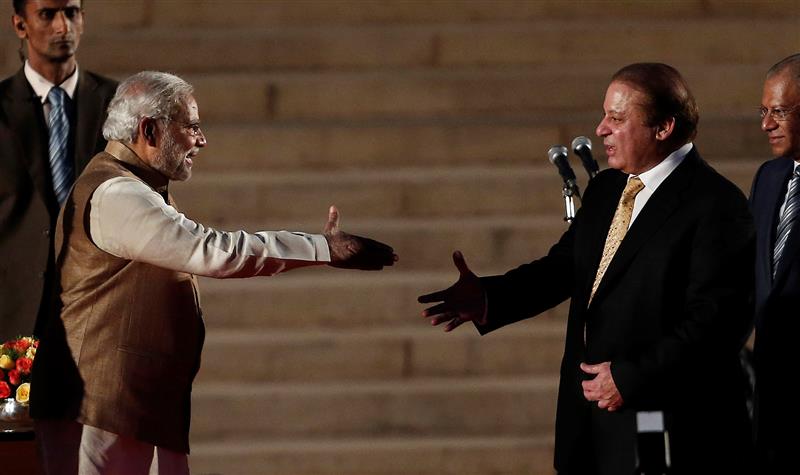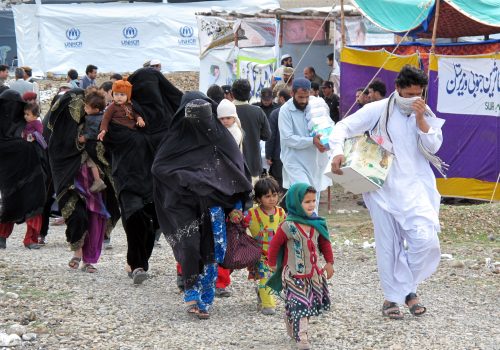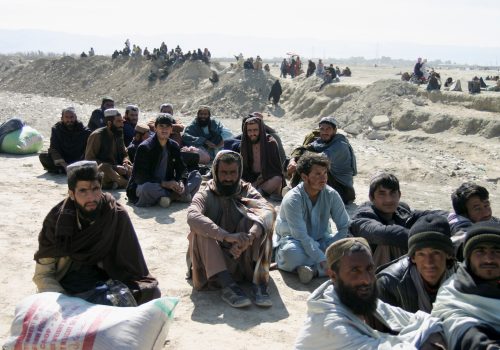Shrouded in secrecy, “the undeclared deaths, attacks, suicide bombings, targeted assassinations”, says author Adrian Levy, are the enormous, hidden cost of operations felt by Pakistan’s Inter-Services Intelligence (ISI) at the grassroots.
Levy, an investigative journalist and co-author of best selling books The Exile: The Stunning Inside Story of Osama bin Laden, Al Qaeda in Flight, Spy Stories: Inside the Secret World of the RAW and the ISI, and most recently The Forever Prisoner: The Full and Searing Account of the CIA’s Most Controversial Covert Program has had unparalleled access to the ISI on the ground and knowledge of its operations.
In this interview with Kamal Alam, a non-resident senior fellow with the Atlantic Council’s South Asia Center, Levy reflects on the deep historical relationship between the ISI and the United States’ Central Intelligence Agency (CIA), noting that it has covered history’s many “pinch points.” He creates a distinction between public debate and private action, showcasing that whether it is ISI’s relations with India’s Research and Analysis Wing (RAW) or the CIA, private backchannel conversations between agencies continue regardless of ongoing political rhetoric.
Here are some key takeaways from the interview:
The myth of the ISI
- The myth of ISI, Levy argues, stems from the 1980s, in particular in 1982 when the United States launched a secret war in Afghanistan “as a pivot against a fading Soviet Union.” Pakistan and the ISI were the staging post for America’s “secret war”–and what the ISI gained out of that were real skills that included combative, covert, and asymmetrical fighting; the ability to transport goods anywhere in the world; and ability to raise covert funds not just from the Gulf, but also via black market funding.
- As such, he argues that part of the myth of the ISI is based on some measure of fact because the agency did in fact master these skills in the 1980s. However, at the same time, the more the ISI and the secret war is discussed, the more that myth grows, resulting in it becoming larger than reality.
ISI and RAW on peace and cooperation in the region
- No matter the debate in the public sphere, according to Levy, through private backchannels there have been plenty of attempts at cooperation and understanding between ISI and RAW, with the two spy agencies coming extremely close to a deal under Pakistani General and former President Pervez Musharraf between 2004 and 2007.
- Even as tensions escalate today between India and Pakistan, these private conversations continue. When it comes to the future of those backchannels, Levy adds: “we are in a period of great opacity and things are the least clear they have been for some time.”
Structural reforms under Lieutenant General Faiz Hameed and General Ehsan ul
Haq
- Levy argues that the largest period for professionalization and reform for ISI took place under General Ehsan ul Haq and Lieutenant General Faiz Hameed, who enforced structural changes that changed the agency, making it a more coherent organization that responds to military discipline and works on the basis of a chain of command.
- General Ehsan ul Haq is amongst the people who laid down the foundations and strategies that continue to be carried on through documents such as the “Kayani doctrine.”
- Lieutenant General Faiz Hameed made reforms that saw him overseeing and managing minute details. The largest result of this was his cooperation with the United States, via the CIA as well as with former US Special Envoy to Afghanistan Zalmay Khalilzad, to end the twenty-year war in Afghanistan. Hameed carried on Haq’s and Kayani’s work.
Deep ties between the CIA and ISI
- The ISI and CIA have deep relations that differ significantly from relations between the civilian leaders of their respective countries. Between 2001 and 2007, Levy notes that “virtually every legitimately high-level target held in Pakistan was detained at the behest of or with joint intelligence operation by CIA, ISI and others.”
- There is a distinction to be made between the public rhetoric of politicians and private actions taken by states. The relationship between the CIA and ISI is a “permanent structure” that continues to exist “beneath the state.” Even though former US President Donald J. Trump publicly called to end ties with Pakistan, covert talks on Afghanistan between the CIA and ISI continued.
Priorities for the ISI and the international community going forward
- While, according to Levy, this is something truly “for the ISI to decide,” he added that one of the biggest areas the ISI has been focusing on is the Financial Action Task Force, which continues to hold huge influence over Pakistan’s economy and financial sector.
- Another area of importance has been Pakistan’s role in the international order. The global space that had “previously [been] totally dominated by India,” according to Levy, has abdicated to an atmosphere of rivalry to “own” the international space. In the same effort, Levy adds that the ISI is recognizing the importance of soft power, especially since this is something that India has mastered.
- Balancing and managing China requires dexterity by the ISI, says Levy, because while China brings in huge infrastructural benefits, balancing US, Turkish, and Gulf desires against Beijing is extremely difficult–but necessary–in today’s multipolar world.
Watch the full interview below:
Kamal Alam is a nonresident senior fellow at the Atlantic Council’s South Asia Center and a special adviser and representative of the Massoud Foundation.

The South Asia Center is the hub for the Atlantic Council’s analysis of the political, social, geographical, and cultural diversity of the region. At the intersection of South Asia and its geopolitics, SAC cultivates dialogue to shape policy and forge ties between the region and the global community.
Related content
Image: India's Prime Minister Narendra Modi (L) shakes hands with his Pakistani counterpart Nawaz Sharif after taking oath at the presidential palace in New Delhi May 26, 2014. Modi was sworn in as India's prime minister in an elaborate ceremony at New Delhi's resplendent presidential palace on Monday, after a sweeping election victory that ended two terms of rule by the Nehru-Gandhi dynasty. REUTERS/Adnan Abidi



